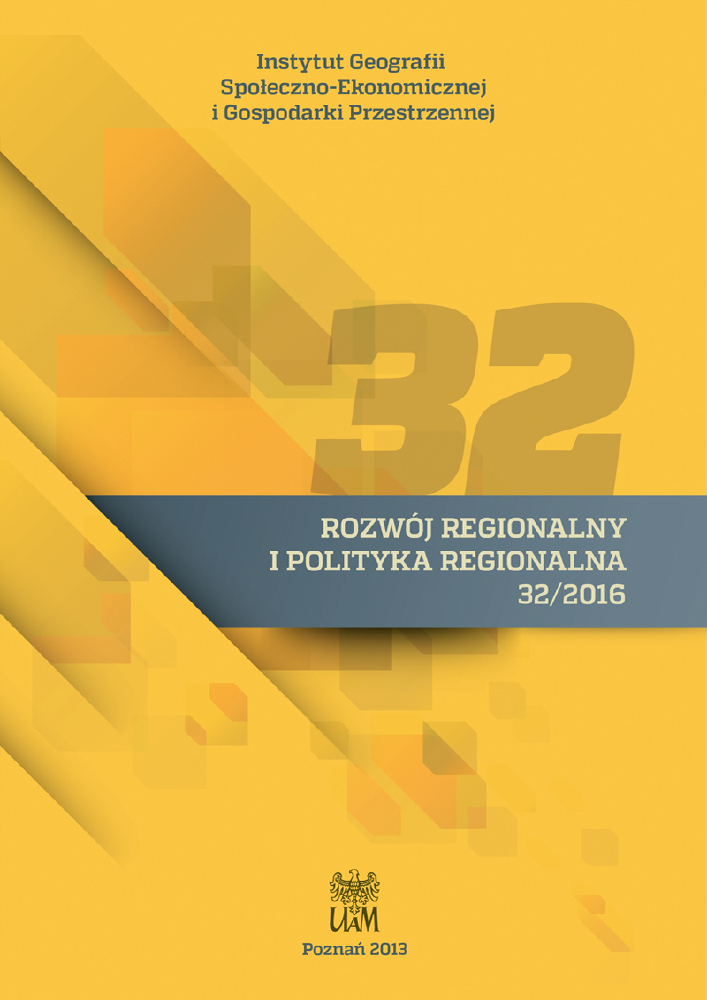Abstrakt
Safety is one of the fundamental human needs which greatly affects the quality of people’s lives. It is also a collective need the satisfaction of which is a task of public authority. That is why this authority takes many measures intended to protect society and individuals as well as their property against threats posed by violent acts of people and violent natural forces. According to the Polish legal regulations, ensuring safety and public order is a task of a commune, also an urban one. To this end towns set up such services as the police, the fire brigade, emergency medical teams, city guards, etc., intended to serve their inhabitants. Their feeling of safety and a low crime rate are indicative of a town’s high level of civilisational and cultural development, but also make the town attractive as a place of residence for both, current and future inhabitants as well as to potential investors. The aim of this paper is to examine selected aspects of the safety of Poznań residents and changes that have taken place in this respect since 1989, the year when the systemic transformation started in Poland. A detailed analysis will be made of interventions by the Poznań police, fire service and ambulance service as factors that contribute the most to the safety of the city residents and their property.Bibliografia
Bogacka E. 2012. Struktura przestrzenna i czynniki przestępczości na obszarze nadgranicznym Polski z Niemcami (Spatial structure and delinquency factors in the borderland between Poland and Germany). Bogucki Wydawnictwo Naukowe, Poznań.
Bukowiecka D., Bukowiecki I. 2009. Interwencja policyjna jako kryterium ekstremalności zawodu funkcjonariusza bezpieczeństwa publicznego (Police intervention as a criterion of extremity of the profession of a public safety functionary). Polski Przegląd Medycyny Lotniczej 2/15: 171–182.
Czudec W. 2010. Konkurencyjność regionów Polski Wschodniej (Competitiveness of East Polish regions). http:// www.pitwin.edu.pl/ attachments/ 1053_019%20czudec.pdf
Filaber J. 2009. Pojęcie bezpieczeństwa publicznego w prawie administracyjnym (wybrane uwagi) (The notion of public safety in administrative law: Selected remarks). [In:] M. Sadowski, P. Szymaniec (eds). Prace prawnicze, administratywistyczne i historyczne Wrocławskie Studia Erazmiańskie Zeszyty Studenckie, Wrocław, 244–262.
Filipczuk H. 1988. Dziecko w placówce wychowawczej (The child in an educational institution). Nasza Księgarnia, Warszawa.
Gierczycka-Bednarek A. 2009. Globalizacja, innowacja i konkurencja w procesie rozwoju regionów unijnych (Globalisation, innovation and competition in the development of EU regions). [In:] D. Kopycińska (ed.), Ekonomiczne problemy funkcjonowania współczesnego świata, Wydanie Katedry Mikroekonomii Uniwersytetu Szczecińskiego, Szczecin.
Hanusek T. 1996. Ustawa o policji. Komentarz (The Police Act. A commentary). Kraków.
Kochman D. 2007. Jakość życia. Analiza teoretyczna (The quality of life. A theoretical analysis). Zdrowie Publiczne, 117(2): 242–248.
Korzeniowski L.F. 2008. Securitologia na początku XXI wieku (Securitology at the start of the 21st century). Securitologia/Securitology/Секюритология, (6): 181–192.
Kryk B., Włodarczyk-Śpiewak K. 2006. Wybrane aspekty jakości życia na przykładzie województwa zachodniopomorskiego (Selected aspects of the quality of life: The case of West Pomerania). [In:] D. Kopycińska (ed.), Zachowania rynkowe gospodarstw domowych i przedsiębiorstw w okresie transformacji systemowej w Polsce, Katedra Mikroekonomii, Uniwersytet Szczeciński, Szczecin.
Małkowski J. 2008. Konkurencyjność polskich regionów (Competitiveness of Polish regions). EDS, 2(5): 29–33.
Moczuk E. 2003. Postrzeganie bezpieczeństwa publicznego w środowisku lokalnym (Perception of public safety in a local milieu). Wyd. Uniwersytetu Rzeszowskiego. Rzeszów.
Mohan D. 2003. Safety as a human right. Indian Institute of Technology, Bombay (http://www.safhr.org/campaigns_charter_safety.htm).
Obuchowski K. 1995. Przez galaktykę potrzeb. Psychologia dążeń ludzkich (Through a galaxy of needs. Psychology of human aspirations). Wyd. Zysk i S-ka, Poznań.
Otwarty świat. Badania konkurencyjności inwestycyjnej Europy 2008 (http://www.paiz.gov.pl/files/?id_plik=9843; accessed: 22 April 2013).
Rotfeld A. 1986. Międzynarodowe czynniki bezpieczeństwa Polski (International factors of Poland’s safety). PWN, Warszawa, 15–16.
Rutkowski J. 1987. Jakość życia. Koncepcja i projekt badania (Quality of life. Conception and research project). Z Prac ZBSE, 162.
Senchagov V.K. (ed.) 2005. (in Russian) Экономическая безопасность России (The economic safety of Russia). ДЕЛО, Moscow.
Shaw C., McKay H.D. 1942. Juvenile delinquency and urban areas. University of Chicago Press, Chicago. DOI: https://doi.org/10.2307/1334446
Słownik współczesnego języka polskiego (Dictionary of contemporary Polish) 1996. Wilga, Warszawa.
Trzebiatowski J. 2011. Jakość życia w perspektywie nauk społecznych i medycznych – systematyzacja ujęć definicyjnych (Quality of life in social and medical sciences – a systematisation of definitions). Hygeia Public Health, 46(1): 25–31.
Wejnert B. 2001. Problematyka subiektywnej i obiektywnej jakości życia w badaniach amerykańskich (Problems of the subjective and objective quality of life in American research). [In:] A. Wachowiak (ed.), Jak żyć? Wybrane problemy jakości życia. Wydanie Fundacji HUMANIORA, Poznań.
Zeliaś A. (ed.) 2004. Poziom życia w Polsce i w krajach Unii Europejskiej (Level of living in Poland and the European Union states). PWE, Warszawa.
Licencja
Copyright
© 2015 IGSEiGP, Uniwersytet im. Adama Mickiewicza w Poznaniu
OPEN ACCESS
